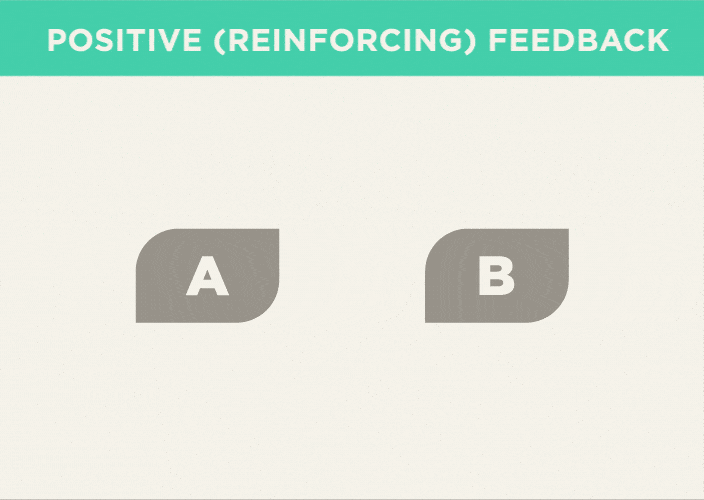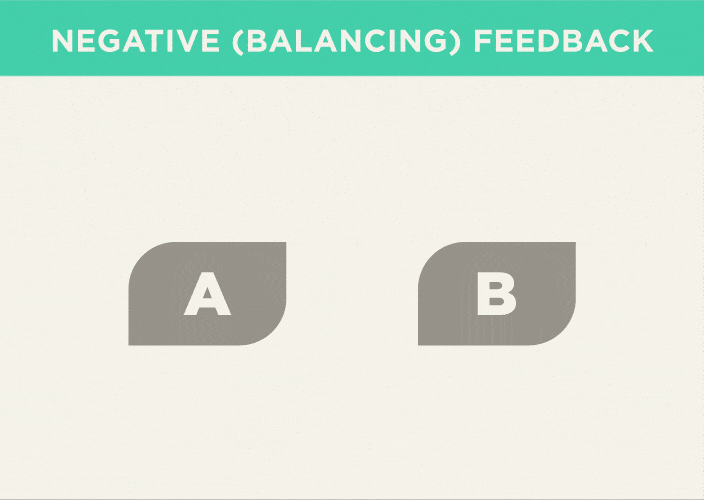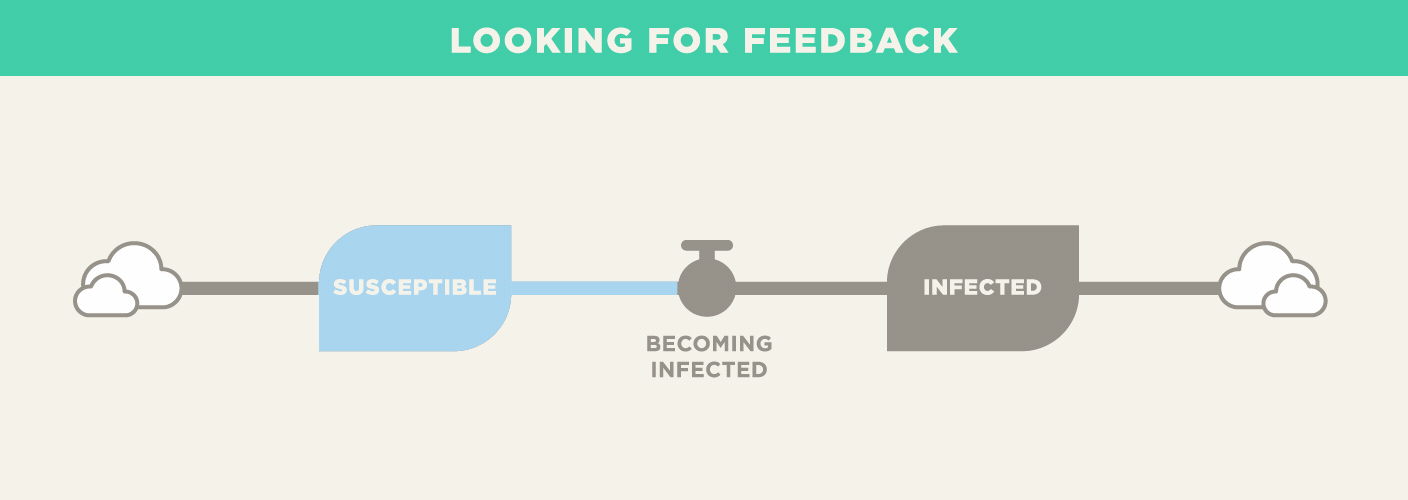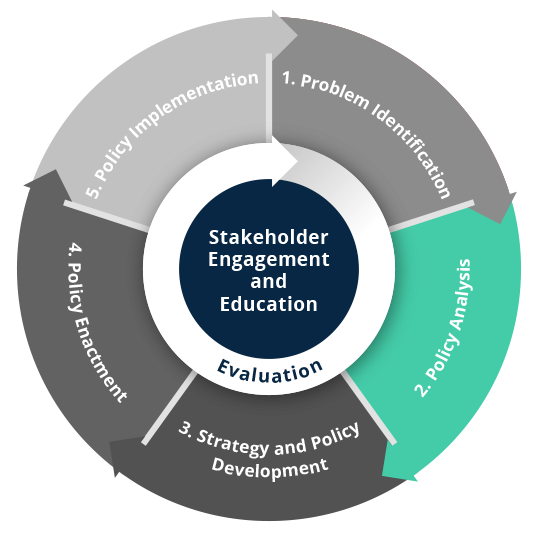What to know
Looking for feedback is an important concept when thinking about systems. Feedback occurs when a condition in a system causes activity that then impacts that initial condition.

Introduction
Feedback is what makes systems problems so interesting and challenging to solve—you always have to think of both the possible intended and unintended consequences of decisions.
Take the simplest example of causality: A causes B. This is often the end of many analyses. But looking for feedback might help you see that A causes B, and over time, B affects A. This perspective of feedback helps you think of solutions to problems. You may not be able to fix one problem without causing a positive or negative effect somewhere else in the system.
Looking for feedback in a system helps give you a better understanding of how actions shape the environment and how the ever-changing environment then shapes activity. For example, the overuse of antibiotics has contributed to the development of stronger and stronger microbes which led to the use of more antibiotics to fight infection. Looking for feedback offers the potential to understand and manage a richer set of outcomes from decisions.
Types of feedback
There are two types of feedback
- Positive (reinforcing) feedback
- Negative (balancing) feedback
Positive Feedback
Positive feedback, also known as positive loops, act to reinforce change. If you push a positive loop in one direction, it tends to accelerate in that direction. A simple example of positive feedback is compounding interest in a bank account. You start with a little money in the account. With a positive interest rate, you generate interest income. This results over time in more money in the account, which in turn generates a greater influx of interest income. It's important to note that a positive feedback doesn't necessarily mean growth in the system. It can also accelerate shrinking or even a collapse.

Negative feedback
Negative feedback, also known as negative loops, work to negate change and drive stability in systems. Again, negative feedback doesn’t mean a negative outcome, as it can stabilize systems. Certain mechanisms in the human body—such as those that regulate temperature of blood glucose levels—are great examples of negative feedback loops. Take the example of regulating body temperature and break it down to see how negative feedback works. As your temperature rises above your set point, your body attempts to counteract that change by causing you to sweat and cool you down. As your temperature then gets below the set point, you begin to shiver in an attempt to raise your body temperature back to its set point.

In the context of TiS skills, we can think about feedback loops as the mechanisms of action that connect stocks to the operation of flows. Let's see how that might happen in the example below.

In this stock and flow diagram, two arrows have been added to demonstrate feedback in the system. In this system depicting an infectious disease, the blue arrow is showing positive feedback. The more infected people there are, the more likely health people will be infected at a faster rate. This will speed up the inflow of infected people., which will further increase the stock of infected people.
The green arrow illustrates negative feedback. As the number of susceptible people declines the flow of new people becoming infected will slow and eventually stop.
Using looking for feedback with the CDC Policy Process
Looking for feedback is an important concept when thinking about systems and is also important in the Policy Analysis domain of the CDC Policy Process. Feedback is what makes systems problems so interesting and challenging to solve, because you always have to think of both the possible intended and unintended consequences of decisions.

It may be important to consider how feedback could play a role in each possible policy solution. Even if the policy seems like a good idea, it may have unintended consequences for other parts of the system.
